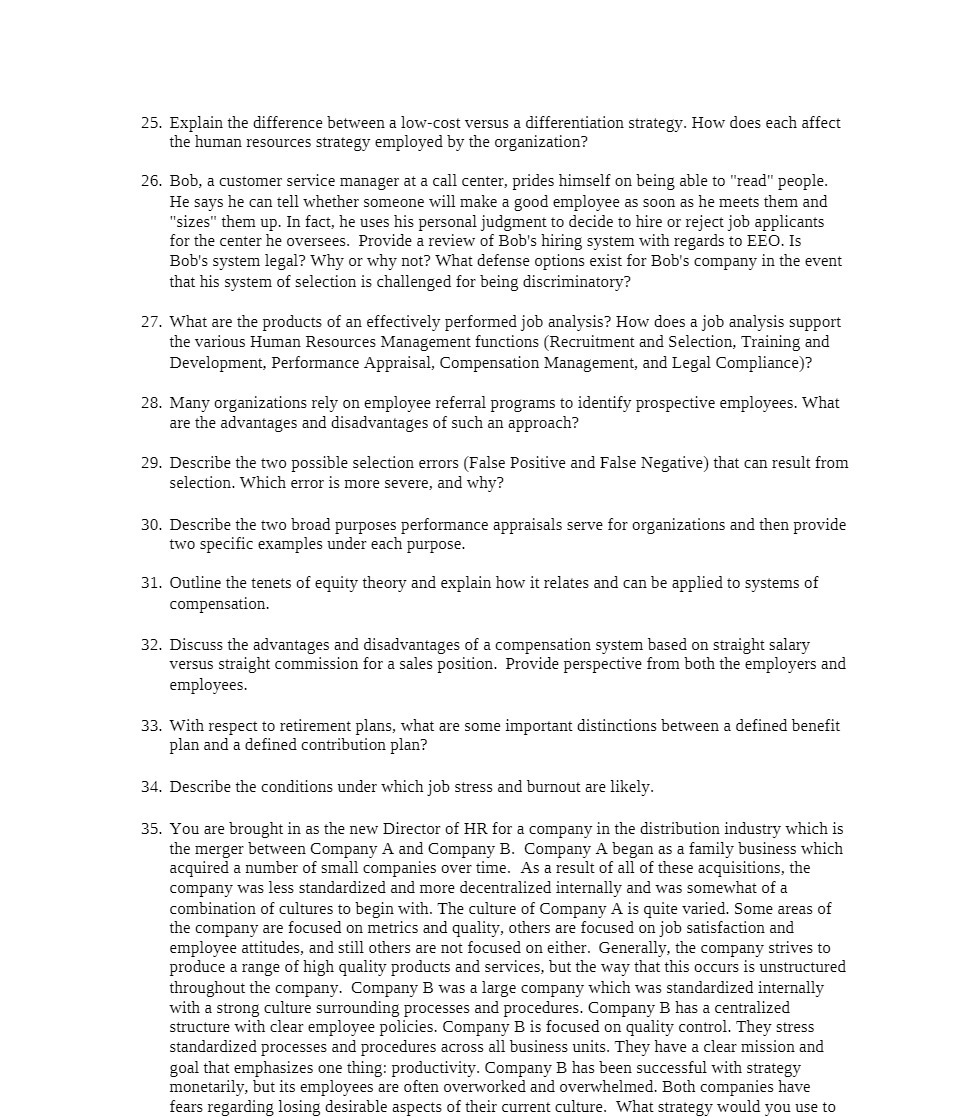25. 25. 27 28. 29. 3t). 31. 32. 33. 34. 35. Explain the difference between a low-cost versus a differentiation strategy. How does each affect the human resources strategy employed by the organization? Bob, a customer service manager at a call center, prides himself on being able to "read\" people. He says he can tell whether someone will make a good employee as soon as he meets them and "sizes" them up. In fact, he uses his personal judgment to decide to hire or reject job applicants for the center he oversees. Provide a review of Bob's hiring system with regards to EEO. Is Bob's system legal? Why or why not? What defense options exist for Bob's company in the event that his system of selection is challenged for being discriminatory? that are the products of an effectively performed job analysis? How does a job analysis support the various Human Resources Management functions (Recruitment and Selection, Training and Development, Performance Appraisal, Compensation Management, and Legal Compliance)? Many organizations rely on employee referral programs to identify prospective employees. What are the advantages and disadvantages of such an approach? Describe the two possible selection errors [False Positive and False Negative} that can result from selection. Which error is more severe, and why? Describe the two broad purposes perfomrance appraisals serve for organizations and then provide two specic examples under each purpose. Outline the tenets of equity theory and explain how it relates and can be applied to systems of compensation. Discuss the advantages and disadvantages of a compensation system based on straight salary versus straight commission for a sales position. Provide perspective from both the employers and employees. With respect to retirement plans, what are some important distinctions between a defined benefit plan and a defined contribution plan? Describe the conditions under which job stress and burnout are likely. You are brought in as the new Director of HR for a company in die distribution industry which is the merger between Company A and Company B. Company A began as a family business which acquired a number of small companies over time. As a result of all of these acquisitions, the company was less standardized and more decentralized internally and was somewhat of a combination of cultures to begin with. The culture of Company A is quite varied. Some areas of the company are focused on metrics and quality, others are focused on job satisfaction and employee attitudes, and still others are not focused on either. Generally, the company strives to produce a range of high quality products and services, but the way that this occurs is unstructured throughout the company. Company B was a large company which was standardized internally with a strong culture surrounding processes and procedures. Company B has a centralized structure with clear employee policies. Company B is focused on quality control. They stress standardized processes and procedures across all business units. They have a clear mission and goal that emphasizes one thing: productivity. Company B has been successful with strategy monetarily, but its employees are often overworked and overwhelmed. Both companies have fears regarding losing desirable aspects of their current culture. What strategy would you use to







